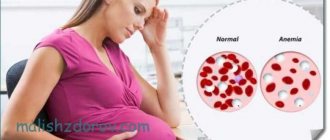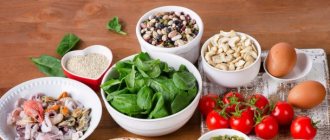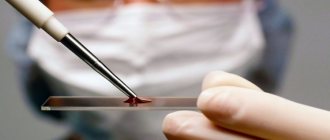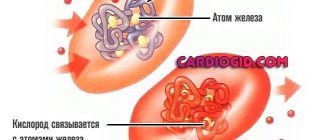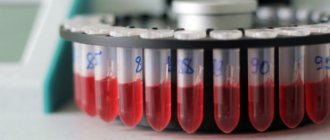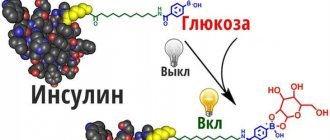All significant indicators and vital processes of the human body directly depend on the health of the cardiovascular system. The cardiovascular and circulatory systems deliver nutrients through the blood to the cells of the entire body. In this way, the processes of development, growth and renewal of cells of human organs, tissues and systems occur.
One of the most important elements that blood delivers to the cell is oxygen. The ability to nourish the human body is determined by the level of hemoglobin in the blood.
Its level depends on many factors such as, on the one hand, congenital and genetically determined, and on the other hand, controlled by a person and conditioned by a certain lifestyle, diet, quality of sleep, the presence or absence of constantly occurring stressful situations, etc.
According to research , low hemoglobin levels can be adjusted upward if you include iron-containing foods in your diet and follow other diet rules.
So what nutritional rules should adults and children follow to increase hemoglobin, and what kind of lifestyle should they lead?
Let us remember that in the previous article we reviewed 20 products for increasing hemoglobin.
Why is low hemoglobin dangerous?
A low level of hemoglobin in the blood causes anemia, or anemia, a condition in which cellular oxygen supply is disrupted. Anemia may indicate the presence of a disease or occur due to poor lifestyle choices.
Anemia is a condition caused by a lack of oxygen in cells. It may be a marker of a serious illness. A person suffering from anemia has pale skin, decreased appetite, is prone to insomnia, frequent mood changes and nervous breakdowns.
The onset of anemia may be facilitated by the following non-genetic factors:
- presence of bad habits: excessive alcohol consumption, smoking, “sedentary” lifestyle;
- unhealthy diet: lack of vital elements in food;
- poor ecology: living in large cities, near unfavorable structures;
- lack of physical activity;
- stress.
All of the above circumstances are subject to human desire. First of all, to treat anemia it is necessary to give up bad habits , including those related to poor nutrition.
Eating right means, firstly, including in your diet foods that contain all the elements necessary, including maintaining the level of hemoglobin in the blood at the desired level.
Secondly, this means providing a systematic approach to nutrition, ensuring food intake at the same time every day, taking into account the individual characteristics of food absorption by the body.
Freshly squeezed juices that increase hemoglobin
Products to increase hemoglobin can be consumed not only fresh or after heat treatment. Some of them will be most effective if taken orally in the form of juices.
Those drinks that are sold in stores will not bring anything good to people suffering from low levels of the main component of blood - red blood cells. Only natural drinks prepared independently at home will be useful.
It is necessary to highlight the following juices containing iron:
- carrot;
- apple;
- beet;
- pomegranate;
- squash;
- potato.
They can be taken orally either in pure form or as a vitamin cocktail. When choosing to increase the most important element in the blood in this way, several rules must be followed:
- Under no circumstances should drinks be stored in the refrigerator;
- It is best to drink the juice 10 minutes after preparation - this is how it will release all its beneficial properties;
- to obtain such a unique medicine, it is important to use ripe ingredients;
- You should drink the drink about half an hour before meals, half a glass.
To enrich the taste and beneficial qualities, you can add a teaspoon of honey. If the juice concentration is high, it is best to dilute it with purified water in a ratio of 1:2.
Diet rules to increase its level
You should take the most responsible approach to planning your own diet.
Firstly , you should exclude fast food and the consumption of so-called junk food, unhealthy food with a high fat content, the presence of preservatives and flavor enhancers, which can cause diabetes.
This food is not only harmful and interferes with weight loss, but also dulls the taste buds, making them immune to the taste of natural food.
Secondly , it is worth planning your meals for at least one week. It is necessary to plan in such a way that over the course of 7 days the body systematically receives all the substances it needs, vitamins, minerals, trace elements, etc.
Vitamins and minerals can be taken additionally in dosage form , but the degree of their absorption even among specialists raises serious suspicions. All the same substances can be obtained from food if you approach the issue properly. In addition, it is necessary to establish a diet regimen: you need to eat food every day at the same time, in different portions and taking into account the body’s need for various substances during the day.
It is recommended to coordinate the diet with the supervising general practitioner, nutritionist or dietician.
It is also necessary to avoid consuming foods that cause allergic reactions.
General recommendations
In addition to the diet, you need to walk outside in any weather, lead an active lifestyle: walk, run, play outdoor games. Positive emotions also play an important role in recovery. A good addition to your diet would be a trip to the sea or to the mountains.
Despite the fact that diet can significantly increase hemoglobin levels, with a progressive disease, proper nutrition alone will not do.
Particular attention should be paid to the problem of anemia if pregnant women and children suffer from it.
Sample menu for every day
A daily menu to increase hemoglobin levels should, on the one hand, take into account the body’s needs to receive certain substances during the day, and on the other, contain products that directly contribute to raising and maintaining a high level of hemoglobin in the blood. The menu for every day should look something like this.
Breakfast
At breakfast, the body needs substances to start the digestion process and provide the body with energy throughout the day.
The ideal option would be a rich breakfast with oatmeal for better digestibility, a couple of eggs, toast with olive oil and mozzarella, fruit and a cup of espresso.
If such a rich breakfast is incompatible with your lifestyle, a small sandwich of whole grain yeast-free bread or thin pita bread with vegetables and tuna and a glass of orange juice will do.
One way or another, it is necessary to have breakfast, since otherwise the risk of developing gastritis, ulcers, etc. increases. Even if you don’t have time for breakfast, it’s worth drinking a glass of water and eating a small chocolate bar.
Eating eggs every day is not recommended. 2-4 times a week is enough. On another day, a warm salad with chicken liver and walnuts would be an excellent option for breakfast. Buckwheat porridge with milk and jelly would also be an excellent option for breakfast (they won’t teach you bad things in kindergarten).
Dinner
At lunch, the body requires fuel, so as not to burn all the beneficial substances received in the first meal, but to use them for the construction and regeneration of tissues and organs.
Lunch should start with soup or salad with fresh vegetables or seaweed.
You also need to eat a product containing protein and iron. It can be fish or meat according to the above instructions. Lunch should be supplemented with carbohydrate foods that provide the body with energy. Rice is ideal - in addition to nourishing the body, it helps cleanse blood vessels and remove waste and toxins. Rice can be alternated with lentils, beans, buckwheat porridge, durum wheat pasta, etc.
It is recommended to choose meat, fish, liver, seafood or poultry as the main dish, alternating throughout the week, for example:
- week 1:
- Monday - halibut;
- Tuesday - beef;
- Wednesday - turkey;
- Thursday - lamb;
- Friday - salmon;
- Saturday - cod;
- Sunday - duck;
- week 2:
- Monday - fasting fruit and vegetable day;
- Tuesday - steamed veal;
- Wednesday - salmon;
- Thursday - turkey cutlets;
- Friday - pollock;
- Saturday and Sunday - lamb kebab with herbs, pepper and garlic.
Soups and salads should be alternated throughout the week.
Of the commonly available soups, the following should be noted on the positive side:
- borscht with beets and sour cream in meat or lean broth,
- chicken noodle soup - the food of Jewish mothers is also indispensable for colds and other respiratory diseases;
- cabbage soup with sorrel;
- solyanka (properly prepared);
- soup kharcho;
- pea soup.
Among the salads you should choose:
- Greek;
- warm salads with liver;
- eggs with cod liver and onions;
- salads with avocado and cucumber;
- beetroot with mozzarella and cashew nuts;
Dinner
Dinner should nourish the body as much as possible with protein and contain a minimum of carbohydrates, since they can interfere with quality healthy sleep and not be used by the body for its intended purpose, but be deposited as excess weight, which has a detrimental effect on the health of the cardiovascular system.
Cottage cheese, seafood, fish, meat and fresh vegetables and a glass of weak green tea are suitable. It is recommended to fill snacks with dairy cheeses, fruits, vegetables, natural cookies, liquid yoghurts and clean natural water.
It is worth paying attention to high-quality Japanese cuisine: the combination of fresh fish, rice and seaweed is ideal for nutrition, but often sushi, rolls and sashimi are made from second-rate raw materials. The best solution is to make sushi at home. Recipes are available in abundance on the Internet, and all the necessary ingredients are available in supermarkets (Auchan, Metro).
Also worthy of mention is the Mediterranean diet , which includes copious amounts of fish, seafood, fresh vegetables, wine and mineral water. There is no need to give up shish kebab, khinkali, chakhokhbili - they should be combined with an abundance of greens and vegetables, so you will not only ensure maximum benefits from food, but also maximum pleasure.
What foods increase hemoglobin during pregnancy?
The period of gestation requires paying special attention to blood count indicators. Iron deficiency can negatively affect the intrauterine formation of a child, so it is very important to know which foods increase hemoglobin. It is necessary to correctly formulate a daily diet to ensure the norm of protein in the blood of the expectant mother naturally. The above products of animal and plant origin can be eaten by pregnant women. You should be aware of the possibility of allergic reactions and adhere to the rules for taking products.
An effective preventive measure to prevent iron deficiency is a vitamin mixture of dried fruits, lemon, honey and nuts. Eat a healthy remedy daily, no more than 2 tbsp. in a day. Pregnant women are also recommended to drink vitamin juices. To avoid allergic reactions, the pomegranate drink should be diluted with water in a 1:1 ratio.
The daily diet of an expectant mother with low hemoglobin should include offal, red meat, quail eggs, and nuts. It is advisable to eat buckwheat or oatmeal in combination with dried fruits and honey.
What is hemoglobin?
Hemoglobin is a part of red blood cells. Their main function is to supply oxygen from the lungs to the cells of the human body.
You can find out your hemoglobin level by taking a simple general blood test. The table shows the hemoglobin norm for certain groups of people.
| Men | 130-169 g/l |
| Women | 113-155 g/l |
| Women during the first trimester of pregnancy | 112-160 g/l |
| Women during the second trimester of pregnancy | 108-144 g/l |
| Women during the third trimester of pregnancy | 100-140 g/l |
| Boys from 12 to 18 years old | 116-164 g/l |
| Girls from 12 to 18 years old | 115-154 g/l |
| Teenagers (of any gender) from 9 to 12 years old | 119-150 g/l |
| Children (of any gender) from 5 to 8 years old | 114-133 g/l |
| Children (of any gender) from 1 year to 5 years | 110-125 g/l |
| Newborn babies (up to 2 weeks) | 135-200 g/l |
| Infants 2 weeks to 2 months | 124-165 g/l |
| Children from 2 months to one year | 109-130 g/l |
Fully or partially limited products
Excluded from the diet are very fatty meats, fish and poultry, culinary, beef and lamb fat, spices, fatty and very hot sauces, pastries and cakes with a large content of cream.
Limit foods high in calcium (milk and dairy products, parsley), tannin and caffeine (coffee, strong tea, chocolate, Coca-Cola), as they interfere with the absorption of iron.
Drinking alcohol in case of iron deficiency anemia is completely excluded, since ethyl alcohol negatively affects the liver and disrupts the absorption of iron and flavocins .
Table of prohibited products
| Proteins, g | Fats, g | Carbohydrates, g | Calories, kcal | |
| cake | 3,8 | 22,6 | 47,0 | 397 |
| chocolate | 5,4 | 35,3 | 56,5 | 544 |
| mayonnaise | 2,4 | 67,0 | 3,9 | 627 |
| sour cream 30% | 2,4 | 30,0 | 3,1 | 294 |
| pork fat | 1,4 | 92,8 | 0,0 | 841 |
| rendered beef fat | 0,0 | 99,7 | 0,0 | 897 |
| cooking fat | 0,0 | 99,7 | 0,0 | 897 |
| rendered pork fat | 0,0 | 99,6 | 0,0 | 896 |
| white dessert wine 16% | 0,5 | 0,0 | 16,0 | 153 |
| dry red wine | 0,2 | 0,0 | 0,3 | 68 |
| vodka | 0,0 | 0,0 | 0,1 | 235 |
| cognac | 0,0 | 0,0 | 0,1 | 239 |
| liquor | 0,3 | 1,1 | 17,2 | 242 |
| beer | 0,3 | 0,0 | 4,6 | 42 |
| cola | 0,0 | 0,0 | 10,4 | 42 |
| coffee | 0,2 | 0,0 | 0,3 | 2 |
| Pepsi | 0,0 | 0,0 | 8,7 | 38 |
| black tea | 20,0 | 5,1 | 6,9 | 152 |
| energy drink | 0,0 | 0,0 | 11,3 | 45 |
| * data is per 100 g of product | ||||
Authorized Products
Nutrition for low hemoglobin is based on the inclusion in the diet of foods containing the maximum amount of iron: internal organs and offal (beef and chicken liver, chicken stomachs and hearts, beef tongue), red meat (beef), meat products (ham, sausage, frankfurters), fish and fish products (caviar, balyk, sprats, sardines), seafood (mussels, shrimp, squid), butter and vegetable oil.
As for dairy products, it is useful to include cheeses, cottage cheese, and fermented milk products in your diet. Soups and all first courses are prepared in strong meat or fish broth. To prepare a side dish with a low iron content, you can use almost all types of cereals, legumes and pasta.
It is recommended to include sufficient quantities of wheat/rye bread and flour products (bakery, baked pies, biscuits) in the diet. All vegetables and fruits are allowed in any culinary processing; it is especially important to include in the diet fruits and vegetables with a high content of ascorbic acid (citrus fruits, rose hips, chokeberries, black currants). The diet should contain various dried fruits - dried apricots, raisins, prunes, figs; seeds and nuts - almonds, pistachios, peanuts, cashews, walnuts, sunflower seeds, pumpkin.
Vegetable and leafy salads are very healthy. Therapeutic nutrition involves the inclusion of sweet foods and dishes made from them (honey, jams, preserves) into the diet. Honey is especially useful. The fructose it contains promotes the absorption of iron in the intestines. It is preferable to consume dark varieties of honey as they contain more copper, iron and manganese. If acidity is low, honey is consumed immediately before meals, and if acidity is high, honey should be consumed 1.5 hours before meals. In the absence of contraindications, you are allowed to eat up to 50 g of honey per day. As for drinks, be sure to include in your diet a decoction of wheat bran and rose hips, vegetable and fruit juices, especially beet juice.
Table of permitted products
| Proteins, g | Fats, g | Carbohydrates, g | Calories, kcal | |
Vegetables and greens | ||||
| boiled cauliflower | 1,8 | 0,3 | 4,0 | 29 |
| boiled potatoes | 2,0 | 0,4 | 16,7 | 82 |
| boiled carrots | 0,8 | 0,3 | 5,0 | 25 |
| salad pepper | 1,3 | 0,0 | 5,3 | 27 |
| boiled beets | 1,8 | 0,0 | 10,8 | 49 |
| dill | 2,5 | 0,5 | 6,3 | 38 |
Fruits | ||||
| apricots | 0,9 | 0,1 | 10,8 | 41 |
| oranges | 0,9 | 0,2 | 8,1 | 36 |
| cherry | 0,8 | 0,5 | 11,3 | 52 |
| grapefruit | 0,7 | 0,2 | 6,5 | 29 |
Berries | ||||
| cranberry | 0,5 | 0,0 | 6,8 | 26 |
| gooseberry | 0,7 | 0,2 | 12,0 | 43 |
| Rowan | 1,5 | 0,1 | 10,9 | 50 |
| currant | 1,0 | 0,4 | 7,5 | 43 |
| rose hip | 1,6 | 0,0 | 14,0 | 51 |
Nuts and dried fruits | ||||
| nuts | 15,0 | 40,0 | 20,0 | 500 |
| prunes | 2,3 | 0,7 | 57,5 | 231 |
Cereals and porridges | ||||
| buckwheat (kernel) | 12,6 | 3,3 | 62,1 | 313 |
| oat groats | 12,3 | 6,1 | 59,5 | 342 |
| cereals | 11,9 | 7,2 | 69,3 | 366 |
| Wheat groats | 11,5 | 1,3 | 62,0 | 316 |
| wheat bran | 15,1 | 3,8 | 53,6 | 296 |
Bakery products | ||||
| wheat bread | 8,1 | 1,0 | 48,8 | 242 |
| whole grain bread | 10,1 | 2,3 | 57,1 | 295 |
Confectionery | ||||
| jam | 0,3 | 0,1 | 56,0 | 238 |
Raw materials and seasonings | ||||
| honey | 0,8 | 0,0 | 81,5 | 329 |
Dairy | ||||
| condensed milk | 7,2 | 8,5 | 56,0 | 320 |
| kefir 3.2% | 2,8 | 3,2 | 4,1 | 56 |
| cream 15% (low fat) | 2,3 | 15,0 | 3,6 | 161 |
| sour cream 15% (low fat) | 2,6 | 15,0 | 3,0 | 158 |
Cheeses and cottage cheese | ||||
| cheese | 24,1 | 29,5 | 0,3 | 363 |
| cottage cheese | 17,2 | 5,0 | 1,8 | 121 |
Meat products | ||||
| lean pork | 16,4 | 27,8 | 0,0 | 316 |
| pork liver | 18,8 | 3,6 | 0,0 | 108 |
| beef | 18,9 | 19,4 | 0,0 | 187 |
| beef liver | 17,4 | 3,1 | 0,0 | 98 |
| beef brains | 9,5 | 9,5 | 0,0 | 124 |
| calf liver | 19,2 | 3,3 | 4,1 | 124 |
| mutton | 15,6 | 16,3 | 0,0 | 209 |
| rabbit | 21,0 | 8,0 | 0,0 | 156 |
| ham | 22,6 | 20,9 | 0,0 | 279 |
| liver pate | 11,6 | 28,9 | 2,5 | 317 |
| beef stew | 14,1 | 17,4 | 0,0 | 214 |
Sausages | ||||
| smoked sausage | 16,2 | 44,6 | 0,0 | 466 |
| blood sausage | 9,0 | 19,5 | 14,5 | 274 |
| beef sausages | 11,4 | 18,2 | 1,5 | 215 |
Bird | ||||
| chicken liver | 20,4 | 5,9 | 1,4 | 140 |
| turkey | 19,2 | 0,7 | 0,0 | 84 |
| turkey liver | 19,5 | 22,0 | 0,0 | 276 |
| goose liver | 15,2 | 39,0 | 0,0 | 412 |
Eggs | ||||
| chicken eggs | 12,7 | 10,9 | 0,7 | 157 |
Fish and seafood | ||||
| brown algae | 1,7 | 0,6 | 8,3 | 43 |
| pink salmon | 20,5 | 6,5 | 0,0 | 142 |
| Red caviar | 32,0 | 15,0 | 0,0 | 263 |
| cod roe | 24,0 | 0,2 | 0,0 | 115 |
| pike caviar | 17,3 | 2,0 | 0,0 | 87 |
| squid | 21,2 | 2,8 | 2,0 | 122 |
| shrimps | 22,0 | 1,0 | 0,0 | 97 |
| salmon | 19,8 | 6,3 | 0,0 | 142 |
| mussels | 9,1 | 1,5 | 0,0 | 50 |
| seaweed | 0,8 | 5,1 | 0,0 | 49 |
| herring | 16,3 | 10,7 | — | 161 |
| cod (liver in oil) | 4,2 | 65,7 | 1,2 | 613 |
| trout | 19,2 | 2,1 | — | 97 |
Oils and fats | ||||
| vegetable oil | 0,0 | 99,0 | 0,0 | 899 |
| butter | 0,5 | 82,5 | 0,8 | 748 |
| olive oil | 0,0 | 99,8 | 0,0 | 898 |
| * data is per 100 g of product | ||||
Features of nutrition of children with low hemoglobin
The child has low hemoglobin. What should you eat? The list of foods for children who have low hemoglobin is similar to the list of foods for adults. The only difference is in the serving size - for children it should be much lower.
As you know, children have little desire to eat healthy foods. The task of parents is to interest their child. The baby should associate each meal with positive emotions. Try to present the dish in a special way, showing a little imagination. Food should arouse both appetite and interest in the child.
Reviews and results
- “... I periodically go on this diet, because due to heavy periods my hemoglobin level is low. As a rule, after a month of dietary nutrition and taking iron supplements, everything returns to normal”;
- “... After a long stay on a mono-diet and the development of anemia, the doctor prescribed a therapeutic diet and said that although dietary nutrition for anemia is an important stage of treatment, it is not able to independently compensate for the iron deficiency in the body. Therefore, he prescribed iron tablets.”
Foods that limit iron absorption
Foods can either stimulate iron absorption or inhibit its absorption.
Foods that contain phytates
Whole grains, cereals, soy, nuts and legumes contain a specific component - phytic acid or phytate. The intake of even a small amount of phytate into the body has an inhibitory effect on the absorption of iron.
During a medical experiment, subjects were offered 2 mg of phytate in foods. It turned out that even this amount reduces iron absorption by 18%. When 250 mg of phytate enters the body, about 82% of iron is not absorbed. [4]
If circumstances require the consumption of foods containing phytic acid, meat, fruits and vegetables containing vitamin C should be introduced into the diet. These measures will help improve the absorption of the non-heme form of iron.
Calcium rich foods
Calcium is the main material for the mineralization and health of bone tissue. We must not forget that it affects the absorption of iron. Calcium intake from dairy products or food additives inhibits these mechanisms.
Observational results show that consuming 165 mg of calcium in the form of milk, cheese or active supplements inhibits the absorption of any type of iron by more than 50-60%. The data obtained concerned doctors who recommend calcium to children, women, and patients with iron deficiency. [5]
Analysis of the studies revealed their short-term nature, carried out with a single use. Other, longer-term observations have shown that calcium in the form of supplements or from dairy products does not inhibit absorption.
To ensure maximum absorption of iron, you should not combine calcium-containing foods with iron-containing foods. It is best to consume them at different times of the day. The same rule applies to active supplements with calcium and iron.
Products with polyphenols
In the everyday diet, polyphenols are present in tea and coffee. In addition, active compounds can be found in plant foods, fruits, vegetables, grains or legumes.
Widely consumed tea and coffee, which contain a fairly high concentration of polyphenols, inhibit the absorption of the plant form of iron. A medical study has shown that one cup of black tea with a meal can suppress iron absorption by 60-70%. It is important to note that the non-concentrated drink has the same effect. If tea is taken between meals, the mechanism of inhibition of iron absorption is no more than 20%.
If you like tea or coffee, it is best to drink a cup 1-2 hours after eating iron-rich foods. This method of taking drinks containing polyphenols will help ensure optimal absorption of iron in any form.

